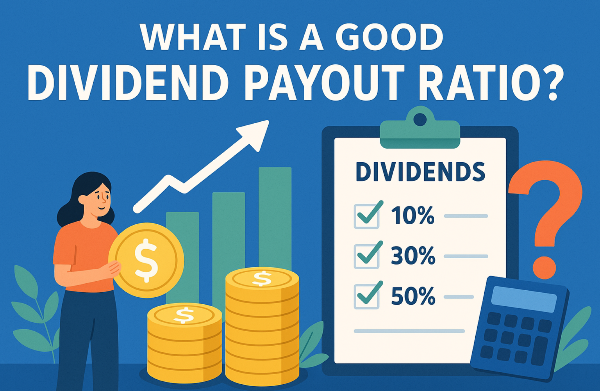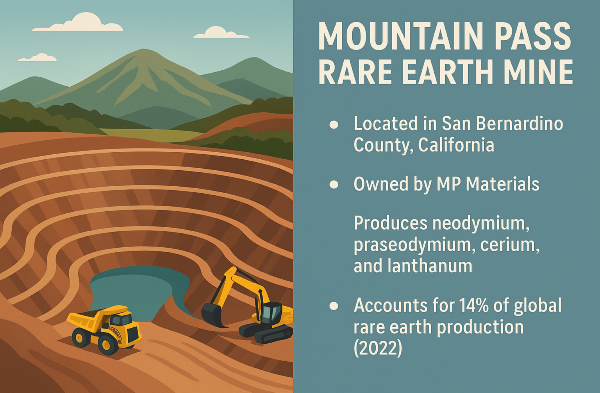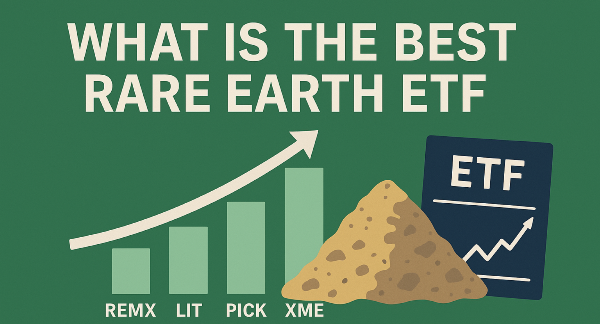Key Takeaways
A good dividend payout ratio typically falls between 30% and 60%, indicating a healthy balance between rewarding shareholders and reinvesting in business growth. This range suggests the company generates enough earnings to sustain dividends while maintaining financial flexibility for future expansion.
Introduction
You ever wonder how companies decide how much of their hard-earned cash to throw back at their investors? That’s where dividend payout ratios come in. Basically, this ratio tells us what percentage of a company’s profits get paid out in dividends versus reinvested into, you know, keeping the business alive. A higher payout ratio might sound great—more money in your pocket, right? But if a company is handing out dividends like free samples at Costco while neglecting actual growth, that's a red flag. Meanwhile, some companies hoard their cash like a dragon sitting on a pile of gold, reinvesting it for future expansion. The trick is finding a balance—which depends on factors like industry norms, business maturity, and investor goals.
Understanding the Dividend Payout Ratio
Okay, so the math is simple: Dividends Paid ÷ Net Income = Dividend Payout Ratio. Boom. Easy. But the real question is—how do different industries play this game? Utility companies and REITs (Real Estate Investment Trusts) tend to have higher payout ratios because they’ve got steady, predictable cash flows. Meanwhile, tech firms are the cool kids who barely pay out anything because they’re constantly reinvesting in the latest AI-powered magic. A healthy payout ratio is sustainable, meaning the company isn’t scraping the bottom of the financial barrel just to make its investors happy. You want dividends? Fine. But you also want a company that isn’t one bad quarter away from cutting them.
Factors That Determine a Good Dividend Payout Ratio
Industry Norms
Different industries have wildly different payout ratio standards. If you’re looking at a utility company with a payout ratio above 70%, that’s totally normal—they’ve got predictable revenue, so they can afford it. Now compare that to Silicon Valley darlings like Apple or Google, and you’ll see payout ratios below 30%, because those companies prefer to throw their money back into growth projects instead of handing out fat dividend checks. You can’t judge every company by the same standard—context matters.
Company Growth and Stability
A company’s age and stability are big factors. Younger, high-growth companies usually hoard profits like a raccoon with a stash of stolen snacks, reinvesting everything into expansion. But mature companies—think consumer staples, pharmaceuticals, or other predictable businesses—typically reward their investors with bigger dividend payouts. If a company has steady earnings, a 40-60% payout ratio is generally considered solid.
Sustainability of Dividends
Now, here’s where things get dicey. Some companies love maxing out their payout ratios, throwing 100% of their net income straight into dividends. Sounds great—until their revenue takes a nosedive, and suddenly, they can’t afford to keep the payouts coming. A sky-high payout ratio is a huge risk, because if earnings drop, those dividends are the first thing on the chopping block. Want proof? Just look at companies like GE and Kraft Heinz, which slashed their dividends when things got messy.
Ideal Dividend Payout Ratios for Different Investors
Conservative Investors
If you’re the cautious type who wants steady, sustainable dividends, you’re probably looking at payout ratios around 30-50%—enough to get consistent returns, but low enough that the company isn’t bleeding cash just to keep investors happy. Johnson & Johnson (JNJ) and Procter & Gamble (PG) are prime examples—stable businesses that won’t suddenly ghost you on dividend payments.
Income-Focused Investors
Want big dividend checks regularly? You’re probably eyeing higher payout ratios, above 50%, in sectors like utilities, REITs, and consumer staples. But beware—if a company’s payout ratio climbs above 80%, it could mean they’re stretching themselves too thin. Remember, if a business is spending all its earnings on dividends, there’s zero cushion for hard times.
Growth-Oriented Investors
If you’re in the game for capital appreciation, a lower payout ratio is actually a good sign—it means the company is reinvesting in growth instead of paying out massive dividends. Apple (AAPL) and Alphabet (GOOGL) have kept their payout ratios low for this reason, building wealth through stock price gains instead of hefty dividend checks.
Red Flags and Risks of a High Payout Ratio
Here’s where things go off the rails—excessively high payout ratios can be a giant red flag. If a company is paying out 100% or more of its income in dividends, it’s basically digging its own grave because there’s no money left for reinvestment. When earnings drop, these companies are the first to slash dividends. Just ask General Electric (GE), which axed its dividend when things got rough. A healthy payout ratio isn’t just about high numbers—it’s about whether the company can actually sustain those payouts.
Conclusion
At the end of the day, there’s no perfect dividend payout ratio—it depends on your goals. Want stability? Stick to companies with lower, sustainable payouts. Need income? Aim for higher, but not reckless payout ratios. Looking for growth? Forget dividends and focus on companies reinvesting profits into future expansion. The key is making sure the business isn’t about to collapse just to keep investors happy. Because trust me—you don’t want to be holding stock in a company that suddenly realizes it can’t pay its bills.
🚀 Master Dividend Investing – Your Ultimate Guide 💰
Looking to supercharge your portfolio with dividend stocks? 📈 Check out these essential reads:
🏆 Top Dividend Stocks & Strategies
💰 Passive Income & Dividend Power Moves
🔍 How to Pick Winning Dividend Stocks
📊 Dividend Ratios & Metrics
⚡ Dividend Timing & Tax Strategies
🔗 Bookmark this guide & start your dividend wealth journey today! 🚀💸




























Key Takeaways
A good dividend payout ratio typically falls between 30% and 60%, indicating a healthy balance between rewarding shareholders and reinvesting in business growth. This range suggests the company generates enough earnings to sustain dividends while maintaining financial flexibility for future expansion.
Introduction
You ever wonder how companies decide how much of their hard-earned cash to throw back at their investors? That’s where dividend payout ratios come in. Basically, this ratio tells us what percentage of a company’s profits get paid out in dividends versus reinvested into, you know, keeping the business alive. A higher payout ratio might sound great—more money in your pocket, right? But if a company is handing out dividends like free samples at Costco while neglecting actual growth, that's a red flag. Meanwhile, some companies hoard their cash like a dragon sitting on a pile of gold, reinvesting it for future expansion. The trick is finding a balance—which depends on factors like industry norms, business maturity, and investor goals.
Understanding the Dividend Payout Ratio
Okay, so the math is simple: Dividends Paid ÷ Net Income = Dividend Payout Ratio. Boom. Easy. But the real question is—how do different industries play this game? Utility companies and REITs (Real Estate Investment Trusts) tend to have higher payout ratios because they’ve got steady, predictable cash flows. Meanwhile, tech firms are the cool kids who barely pay out anything because they’re constantly reinvesting in the latest AI-powered magic. A healthy payout ratio is sustainable, meaning the company isn’t scraping the bottom of the financial barrel just to make its investors happy. You want dividends? Fine. But you also want a company that isn’t one bad quarter away from cutting them.
Factors That Determine a Good Dividend Payout Ratio
Industry Norms
Different industries have wildly different payout ratio standards. If you’re looking at a utility company with a payout ratio above 70%, that’s totally normal—they’ve got predictable revenue, so they can afford it. Now compare that to Silicon Valley darlings like Apple or Google, and you’ll see payout ratios below 30%, because those companies prefer to throw their money back into growth projects instead of handing out fat dividend checks. You can’t judge every company by the same standard—context matters.
Company Growth and Stability
A company’s age and stability are big factors. Younger, high-growth companies usually hoard profits like a raccoon with a stash of stolen snacks, reinvesting everything into expansion. But mature companies—think consumer staples, pharmaceuticals, or other predictable businesses—typically reward their investors with bigger dividend payouts. If a company has steady earnings, a 40-60% payout ratio is generally considered solid.
Sustainability of Dividends
Now, here’s where things get dicey. Some companies love maxing out their payout ratios, throwing 100% of their net income straight into dividends. Sounds great—until their revenue takes a nosedive, and suddenly, they can’t afford to keep the payouts coming. A sky-high payout ratio is a huge risk, because if earnings drop, those dividends are the first thing on the chopping block. Want proof? Just look at companies like GE and Kraft Heinz, which slashed their dividends when things got messy.
Ideal Dividend Payout Ratios for Different Investors
Conservative Investors
If you’re the cautious type who wants steady, sustainable dividends, you’re probably looking at payout ratios around 30-50%—enough to get consistent returns, but low enough that the company isn’t bleeding cash just to keep investors happy. Johnson & Johnson (JNJ) and Procter & Gamble (PG) are prime examples—stable businesses that won’t suddenly ghost you on dividend payments.
Income-Focused Investors
Want big dividend checks regularly? You’re probably eyeing higher payout ratios, above 50%, in sectors like utilities, REITs, and consumer staples. But beware—if a company’s payout ratio climbs above 80%, it could mean they’re stretching themselves too thin. Remember, if a business is spending all its earnings on dividends, there’s zero cushion for hard times.
Growth-Oriented Investors
If you’re in the game for capital appreciation, a lower payout ratio is actually a good sign—it means the company is reinvesting in growth instead of paying out massive dividends. Apple (AAPL) and Alphabet (GOOGL) have kept their payout ratios low for this reason, building wealth through stock price gains instead of hefty dividend checks.
Red Flags and Risks of a High Payout Ratio
Here’s where things go off the rails—excessively high payout ratios can be a giant red flag. If a company is paying out 100% or more of its income in dividends, it’s basically digging its own grave because there’s no money left for reinvestment. When earnings drop, these companies are the first to slash dividends. Just ask General Electric (GE), which axed its dividend when things got rough. A healthy payout ratio isn’t just about high numbers—it’s about whether the company can actually sustain those payouts.
Conclusion
At the end of the day, there’s no perfect dividend payout ratio—it depends on your goals. Want stability? Stick to companies with lower, sustainable payouts. Need income? Aim for higher, but not reckless payout ratios. Looking for growth? Forget dividends and focus on companies reinvesting profits into future expansion. The key is making sure the business isn’t about to collapse just to keep investors happy. Because trust me—you don’t want to be holding stock in a company that suddenly realizes it can’t pay its bills.
🚀 Master Dividend Investing – Your Ultimate Guide 💰
Looking to supercharge your portfolio with dividend stocks? 📈 Check out these essential reads:
🏆 Top Dividend Stocks & Strategies
💰 Passive Income & Dividend Power Moves
🔍 How to Pick Winning Dividend Stocks
📊 Dividend Ratios & Metrics
⚡ Dividend Timing & Tax Strategies
🔗 Bookmark this guide & start your dividend wealth journey today! 🚀💸